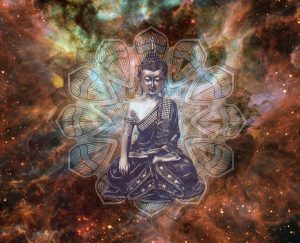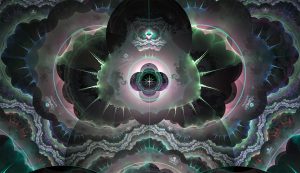
This article follows on from Freudian Slips, where I suggested that the hidden self has knowledge about the conscious personality and what it needs. Here I am going to go a little further, and suggest that the hidden self has access to information beyond the personal.
Talking about dreams in general, there is a lot of literature about their interpretation, so I do not intend to discuss this, having nothing significantly original to add. I would suggest merely that anyone who has studied and interpreted their dreams over a period of time cannot fail to be impressed by their ingenuity, their subtlety, their depth of understanding and insight, and the extraordinary nature of their symbolic language. The meaningful question for my purpose here is, what is the nature of this intelligence standing behind dreams, an intelligence capable of all this? Calling it the deeper self, or calling dreams the language of the soul, may be accurate, but is suitably vague, and does not in any way help to arrive at an understanding of this extraordinary phenomenon.
Usually dreams are interpreted in order to help guide people in their life journey. Here I am going to mention two others of a revelatory nature. The first example is often mentioned in dream literature. It is that of the chemist Friedrich August Kekulé who, while trying to discover the chemical structure of benzene, had a dream of a snake eating its own tail, which in the language of mythology is called the ouroboros. This inspired him to understand the cyclic structure of benzene.
Materialists would say that dreams are created by the brain. How could his brain have symbolic knowledge about a chemical which his conscious mind didn’t have? A further fascinating question, which I won’t investigate here, is, what does it mean, from a metaphysical and cosmological perspective, that the structure of a chemical can be revealed by an archetypal, mythological image?
The second dream is less well known, but of a similar nature and even more impressive. This comes from C. G. Jung’s book Psychology and Alchemy, part 2 of which is a sequence of dreams, with commentaries, of one of his analysands. Jung calls this one the Great Vision (1):
“There is a vertical and a horizontal circle, having a common centre. This is the world clock. It is supported by the black bird. The vertical circle is a blue disc with a white border divided into 4 x 8 = 32 partitions. A pointer rotates upon it. The horizontal circle consists of four colours. On it stand four little men with pendulums, and round about it is laid the ring that was once dark and is now golden (formerly carried by the children). The ‘clock’ has three rhythms or pulses:
1. The small pulse: the pointer on the blue vertical disc advances by 1/32.
2. The middle pulse: one complete revolution of the pointer. At the same time the horizontal circle advances by 1/32.
3. The great pulse: 32 middle pulses are equal to one revolution of the golden ring”.
Jung goes on to say that “this remarkable vision made a deep and lasting impression on the dreamer, an impression of ‘the most sublime harmony,’ as he himself puts it”.

The text suggests that Jung thought that it would be relevant and helpful if he disclosed the identity of the dreamer, but client confidentiality did not allow this — “unfortunately medical discretion prevents my giving the biographical details”. However, it subsequently emerged that the dreamer was the (later Nobel Prize winning) physicist Wolfgang Pauli, who was privileged to receive this revelatory dream.
Pauli was obviously targeted by the vision, since there would have been little point in giving it to most people, as they know very little about physics, and wouldn’t have known what to do with it. “The dreams are interpreted as a series to elucidate the meanings of recurring motifs and symbols, with the series culminating in the vision of a ‘world clock’, which is actually several clocks on different planes operating on different scales and colours as a symbol of Pauli’s unconscious apprehension of some grand cosmic order” (2).
Pauli went on to collaborate with Jung, and share his ideas. I don’t know if it caused any professional problems to be associated with a ‘mystical’ psychologist, but, if so, he clearly ignored them. He wrote part 2 of Interpretation of Nature and the Psyche (3), The Influence of Archetypal Ideas on the Scientific Theories of Kepler, the first part of which was Jung’s Synchronicity: an Acausal Connecting Principle.
As I said above, materialists will say that dreams are created by the brain; what else can they say? One example would be Bert States, a professor of Dramatic Arts, who wrote Seeing in the Dark: Reflections on Dreams and Dreaming, published by Yale University Press, no less. He wrote from a Darwinian perspective, and came to the conclusion that dreams are meaningless; his second chapter is entitled The Myth of the Intelligent Dream, which begins with a discussion of Richard Dawkins and his concept of memes. Need I say more?
I hope that the example of Pauli’s dream will convince you otherwise. How can a brain have an understanding of the World Clock, profound enough to inspire one of the world’s great physicists? I suggest that this information came from elsewhere.

Footnotes:
(1) Routledge & Kegan Paul, 1968, p203–4
(2) https://en.wikipedia.org/wiki/Psychology_and_Alchemy
(3) Routledge & Kegan Paul, 1955